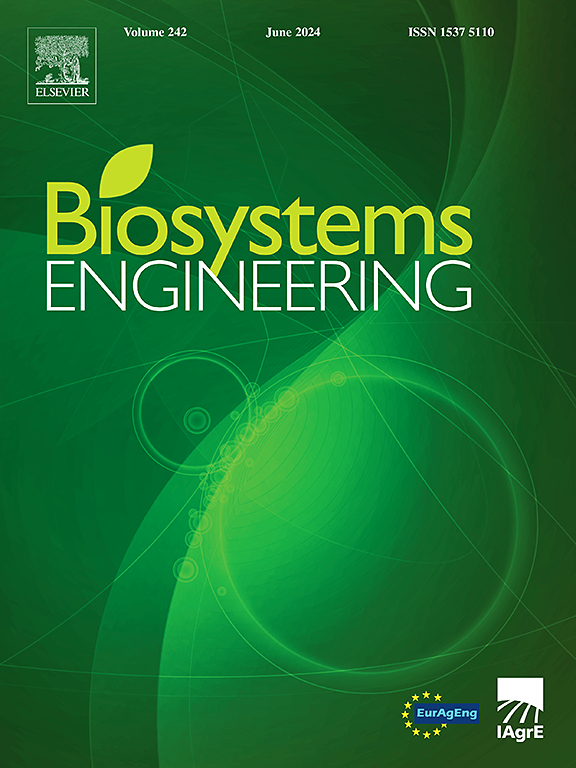不同尺度多孔介质中阻力系数关系的相似分析与验证——以板条底板为例
IF 5.3
1区 农林科学
Q1 AGRICULTURAL ENGINEERING
引用次数: 0
摘要
畜舍中,板条地板是CFD建模的挑战之一,因为它的槽尺寸小,固体表面数量多。多孔介质建模的阻力系数来源于规模实验测试和全尺寸CFD模拟,为解决这些挑战提供了实用的方法。澄清不同尺度下板条楼板阻力系数之间的关系对于优化计算资源消耗和简化研究过程至关重要。本文运用相似理论,探讨了不同几何尺度下多孔介质建模阻力系数的关系。相似度分析表明,粘性阻力系数相似常数与几何相似常数的平方成反比(cD=1/cl2),惯性阻力系数相似常数与几何相似常数成反比(cC=1/cl)。并且,CFD模拟了三种不同几何相似尺度(1:1,1:2.5和1:5)的板条地板,证实了这些关系的有效性。相似理论的预测结果与模拟结果非常吻合,1:1比例(原型)的平均误差为2.1%,1:5比例的平均误差为1.6%。此外,通过将直接几何建模得出的阻力系数纳入多孔介质模型,采用1:25比例猪圈模型进行了详细的CFD验证。与实验数据的比较表明,风速和温度的计算结果吻合较好,最大风速误差为0.34 m/s,整体相对气温误差为1.98%。本文章由计算机程序翻译,如有差异,请以英文原文为准。
Similarity analysis and verification of the relationship between resistance coefficients in porous media of different scales: Focusing on slatted floor
livestock houses, the slatted floor is one of the challenges to be modelled in CFD due to its small sizes of slots and large number of solid surfaces. Porous media modelling, with resistance coefficients derived from scaled experimental tests and full-scale CFD simulations, offers a practical approach to addressing these challenges. Clarifying the relationship between the resistance coefficients of slatted floors at different scales is crucial for optimising computational resource consumption and simplifying the research process. This paper, using similarity theory, explores the relationship of resistance coefficients of porous media modelling at different geometric scales. The similarity analysis revealed that the viscous resistance coefficient similarity constant is inversely proportional to the square of the geometric similarity constant (), while the inertial resistance coefficient similarity constant is inverselIn %y proportional to the geometric similarity constant (). And, CFD simulations of slatted floors at three different geometric similarity scales (1:1, 1:2.5, and 1:5) confirmed the validity of these relationships. The predictions of similarity theory showed strong agreement with the simulation results, with an average error of 2.1 % for the 1:1 scale (prototype) and 1.6 % for the 1:5 scale. Furthermore, a detailed CFD validation was conducted using a 1:2.5 scaled pig pen model by incorporating the resistance coefficients derived from direct geometric modelling into a porous media model. Comparison with experimental data demonstrated good agreement in both air velocity and temperature, with a maximum air velocity error of 0.34 m/s and an overall relative air temperature error of 1.98 %.
求助全文
通过发布文献求助,成功后即可免费获取论文全文。
去求助
来源期刊

Biosystems Engineering
农林科学-农业工程
CiteScore
10.60
自引率
7.80%
发文量
239
审稿时长
53 days
期刊介绍:
Biosystems Engineering publishes research in engineering and the physical sciences that represent advances in understanding or modelling of the performance of biological systems for sustainable developments in land use and the environment, agriculture and amenity, bioproduction processes and the food chain. The subject matter of the journal reflects the wide range and interdisciplinary nature of research in engineering for biological systems.
 求助内容:
求助内容: 应助结果提醒方式:
应助结果提醒方式:


